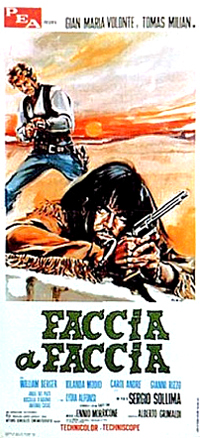I have rewatched FtF also recently. And it was again an entertaining way to spend 2 hours.
I even liked Berger a bit more in his role this time (but still think that Lee van Clef would have been the perfect choice), but the film has still a lot of problems for me. In both departments style and content.
There isn’t any brilliance in FtF (nor in any other Sollima film I have seen), but many well made scenes alternating with some weaker material. The beginning and the ending in the desert are the best parts, but in-between the film too often stumbles.
What John W has said above, that the “plot is an allegory on the rise of Fascism in Europe”, is most likely a good key to interpret the film. But I don’t think that FtF succeedes in developing this themes. Or at least only in parts. I still say that the (intended) character development is partly a bit sloppy and leaves me back with several unanswered questions.
Spoiler alert:
The strongest character is of course Brad Fletcher, and here the film is at best in showing him changing. But what had happened to his disease (lung tuberculosis I assume)? From one moment to the next it simply disappears, and this is a big fault for a film with “ambitions”.
Beuregard on the other hand is never shown as the ruthless outlaw he is supposed to be. There is one scene where he tries to shoot Brad after his escape, but why should he? One scene before he doesn’t shoot the other deputies, who represent in their brutish behaviour an unjust law, and are (unlike Brad) for his escape a threat.
Beau’s gang isn’t characterised enough to justify the screentime they have, and at he same moment there is too much screentime spent for these guys only to have them all shot during the bank robbery.
And there is this gang member Zachary. When he and Beau met in the prison he still is in sympahty with Beau, but when we meet him next he leads the law mob to the outlaw refuge. But not by threat, no, he suddenly becomes without any explanation not only the leader of the mob, he is also the most fanatic of them all in his bloodthirst and his will to kill all his former friends.
And really, why should Beau shoot Fletcher at the end and spare Siringo? Fletcher didn’t do any bad to him and just was ready to give his live together with Beau in order to save the refugees, while Siringo has betrayed him and is responsible for the death of most of his friends.
And unfortunately there are more things which are too crude for a film which wants to be clever. Sollima has said there was a much longer version intended, maybe up to 135 min. I would like to see it.
All in all FtF is despite its flaws and thanks to Volonte, Morricone and some good directing an entertaining movie, and is still a 7/10 film.


